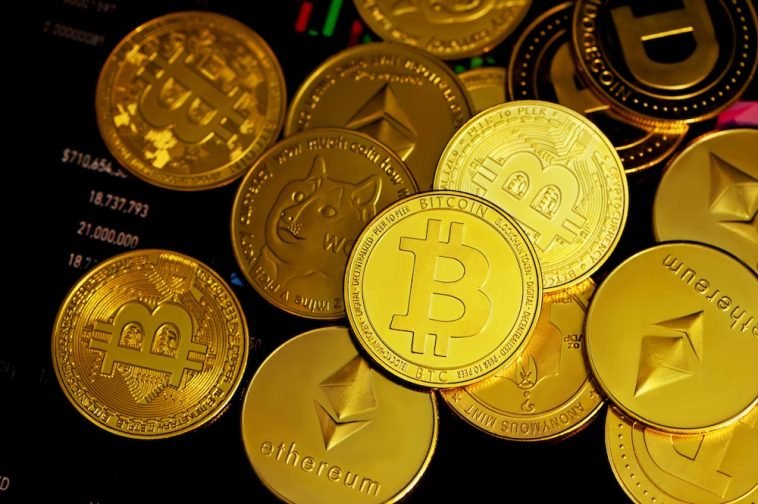Introduction.
Bitcoin ATMs have become increasingly prevalent, offering a convenient way for individuals to buy and sell Bitcoin using cash or debit cards.
These machines bridge the gap between the digital realm of cryptocurrency and the physical world, providing users with a tangible and user-friendly interface to interact with the decentralized digital currency.
In this article, we will delve into the fascinating world of Bitcoin ATMs, exploring how they function, the different types available, and the steps involved in using them.
By understanding the inner workings of Bitcoin ATMs, users can navigate this emerging technology with confidence and take advantage of its accessibility and convenience.
The Basics of Bitcoin ATM Machines.
Bitcoin ATMs are specialized kiosks that allow users to purchase or sell Bitcoin using traditional fiat currencies, such as cash or debit cards.
These machines provide a physical interface where users can interact with the Bitcoin network in real time, facilitating the exchange of fiat currency for Bitcoin or vice versa.
Bitcoin ATMs operate similarly to regular ATMs, but instead of dispensing cash, they facilitate the transfer of digital assets.
Types of Bitcoin ATM Machines.
1. One-Way Bitcoin ATM Machines.
These machines only support the purchase of Bitcoin using fiat currency. Users can insert cash or use a debit card to buy Bitcoin, which is then transferred to their Bitcoin wallet. However, selling Bitcoin for cash is not possible with one-way machines.
2. Two-Way Bitcoin ATM Machines.
These machines offer both buying and selling functionalities, allowing users to convert Bitcoin into cash or purchase Bitcoin using fiat currency.
With two-way machines, users can sell their Bitcoin holdings and receive cash directly from the ATM.
What are the Risks To Consider When Investing In Bitcoin?
While Bitcoin offers potential benefits, it’s essential to consider the risks involved:
1. Volatility.
Bitcoin’s price can experience significant volatility, leading to potential losses for investors. Rapid price fluctuations can make it challenging to predict short-term movements and require a long-term investment perspective.
2. Regulatory and Legal Uncertainty.
The regulatory landscape surrounding cryptocurrencies is still evolving. Regulatory changes or government crackdowns could impact the value and viability of Bitcoin as an investment.
3. Security Concerns.
The digital nature of Bitcoin exposes it to cybersecurity risks. Investors need to employ robust security measures to safeguard their Bitcoin holdings from theft or hacking attempts.
4. Lack of Fundamental Valuation.
Bitcoin’s value is primarily driven by market demand, speculation, and investor sentiment. Unlike traditional assets, it lacks intrinsic value or cash flow, making its valuation challenging.
How Do Bitcoin ATMs Work?
In this article, we will take a closer look at the inner workings of Bitcoin ATMs, examining the steps involved in conducting transactions, the types of transactions supported, and the key components that make these machines function seamlessly.
Understanding how Bitcoin ATMs work can empower users to explore this evolving landscape of digital finance with confidence and ease.
1. User Verification.
To comply with regulatory requirements and prevent illegal activities, Bitcoin ATMs typically require users to undergo a one-time verification process. This may involve scanning identification documents such as a driver’s license or passport.
Some machines also employ additional security measures like facial recognition or fingerprint scanning to ensure the user’s identity.
2. Wallet Setup.
Before initiating any transactions, users need to have a Bitcoin wallet. Some Bitcoin ATMs provide the option to create a new wallet directly on the machine. Alternatively, users can use an existing wallet by scanning their wallet’s QR code.
3. Buying Bitcoin.
To purchase Bitcoin, users select the “Buy Bitcoin” option on the machine’s interface. They then enter the desired amount of Bitcoin they wish to purchase or the amount of fiat currency they want to spend.
The machine will display the current exchange rate and any transaction fees involved. Users can make payments by inserting cash into the machine or by scanning a QR code from their debit/credit card.
4. Selling Bitcoin.
For two-way Bitcoin ATMs, selling Bitcoin is an option. Users select the “Sell Bitcoin” option on the machine’s interface and follow the instructions.
They typically need to scan a QR code representing their Bitcoin wallet address and enter the amount of Bitcoin they wish to sell.
The machine will display the current exchange rate and any applicable transaction fees. Once the transaction is confirmed, the machine dispenses cash to the user.
5. Transaction Confirmation.
After completing a transaction, the Bitcoin ATM provides a printed receipt with relevant transaction details such as the Bitcoin address, transaction ID, and the amount of Bitcoin or fiat currency involved. Users can use this receipt as proof of the transaction.
Conclusion.
Bitcoin ATMs have revolutionized the accessibility of cryptocurrencies by bridging the gap between digital assets and traditional fiat currencies.
These user-friendly devices enable individuals to buy or sell Bitcoin using cash or debit/credit cards, expanding the adoption of cryptocurrencies in various regions worldwide.
By understanding the mechanics of Bitcoin ATMs, users can confidently navigate the process of buying or selling Bitcoin, exploring the exciting world of digital finance and embracing the potential of decentralized currencies.
With the convenience and simplicity they offer, Bitcoin ATMs play a vital role in shaping the future of financial transactions.






GIPHY App Key not set. Please check settings